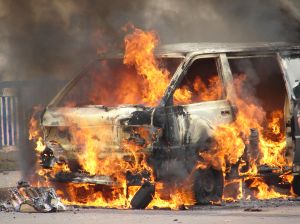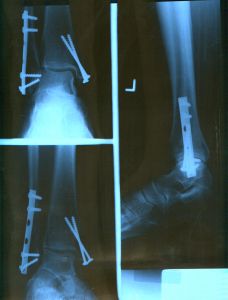 I have blogged here in the past that the 2011 Republican-controlled Florida Legislature seemed bound and determined to gut one of the state’s most important laws at holding vehicle manufacturers accountable for producing defective products. Although some within the legislature may have had this outcome as a goal, reasonable minds prevailed in the 2011 legislative session to the extent that the legislative body’s modifications did not eviscerate the law as many within the civil justice community had feared.
I have blogged here in the past that the 2011 Republican-controlled Florida Legislature seemed bound and determined to gut one of the state’s most important laws at holding vehicle manufacturers accountable for producing defective products. Although some within the legislature may have had this outcome as a goal, reasonable minds prevailed in the 2011 legislative session to the extent that the legislative body’s modifications did not eviscerate the law as many within the civil justice community had feared.
The principle of law under discussion is the crashworthiness doctrine. It stands for the proposition that vehicle manufacturers can be liable for harm caused by unsafe vehicles, even if the vehicle was put to the test by another negligent party. Kidron v. Carmona, 665 So. 2d 289 (Fla. 3rd DCA 1995) (following Larson v. General Motors, 391 F. 2d 495 (8th Cir. 1968)).
The principle was later bolstered by the holding in D’Amario v. Ford, 806 So. 2d 424 (Fla. 2001), which limited the use of comparative fault in crashworthiness cases.
In D’Amario a minor was the passenger in a vehicle that struck a tree. A fire began that ended in an explosion, causing the minor to lose three limbs and suffering burns to much of his body. The fire resulted from a defective relay switch manufactured by Ford.
The minor and his mother sued Ford for the damages resulting from the defective switch. They did not seek to recover compensation from Ford for injuries from striking the tree.
At trial, Ford sought to introduce evidence as to the cause of the initial accident, which was that another minor was intoxicated and negligently drove the vehicle into the tree. The plaintiffs (mother and son) argued that this evidence was irrelevant to the claim for damages caused by the defective switch. The trial court admitted the evidence, meaning that it allowed the jury to hear the evidence. The jury returned a verdict for Ford.
The case was appealed and made its way to the Florida Supreme Court. The court considered cases from other states and concluded that the majority view in the nation was that such impact evidence was relevant. Nevertheless, the Florida Supreme Court adopted the minority view, ruling in favor of the catastrophically injured minor and his mother.
Before D’Amario, in crashworthiness cases jurors were allowed to hear evidence of the driver’s fault and apportion damages against the driver. This tended to direct the focus of responsibility onto the negligent driver and take it off the manufacturer whose defective product caused the enhanced injury. D’Amario eliminated the chance of such evidence distracting, confusing, or angering juries.
Not surprisingly, automobile manufacturers have been trying for ten years to reverse D’Amario. Many thought their goal would be accomplished in the 2011 legislative session. Although a measure was proposed that would have satisfied the manufacturers, amendments filed on the Senate Floor by Senator David Simmons (R) and passed by both chambers of the Legislature prevented the crashworthiness doctrine from being eliminated altogether in Florida. The bill that passed, which does modify D’Amario, revised Florida Statute 768.81.
The revised 768.81(3)(b) provides as follows:
In a products liability action alleging that injuries received by a claimant in an accident were enhanced by a defective product, the trier of fact shall consider the fault of all persons who contributed to the accident when apportioning fault between or among them. The jury shall be appropriately instructed by the trial judge on the apportionment of fault in products liability actions where there are allegations that the injuries received by the claimant in an accident were enhanced by a defective product. The rules of evidence apply to these actions.
Continue reading
 Sometimes workers are hurt in the course and scope of their employment by the negligence of third parties. Third parties in this context are entities other than those entitled to workers’ compensation immunity. Employers and some subcontractors are entitled to the immunity. Those that are not must pay damages in accordance with the personal injury laws, something quite different than the benefits prescribed by workers’ compensation.
Sometimes workers are hurt in the course and scope of their employment by the negligence of third parties. Third parties in this context are entities other than those entitled to workers’ compensation immunity. Employers and some subcontractors are entitled to the immunity. Those that are not must pay damages in accordance with the personal injury laws, something quite different than the benefits prescribed by workers’ compensation.  Florida Injury Attorney Blawg
Florida Injury Attorney Blawg








